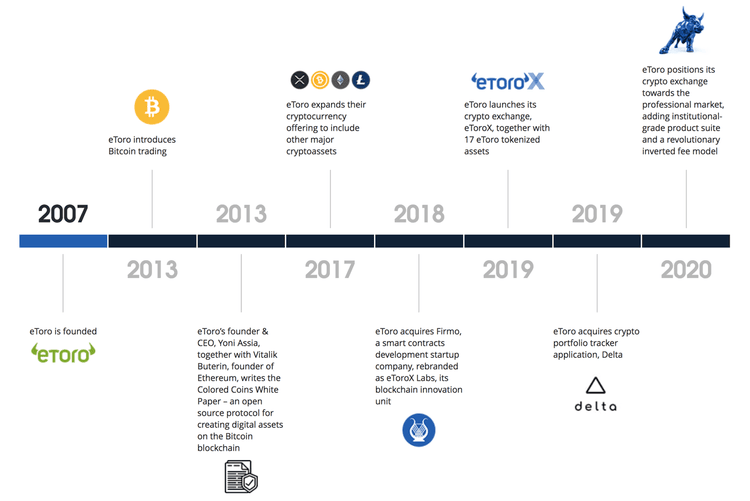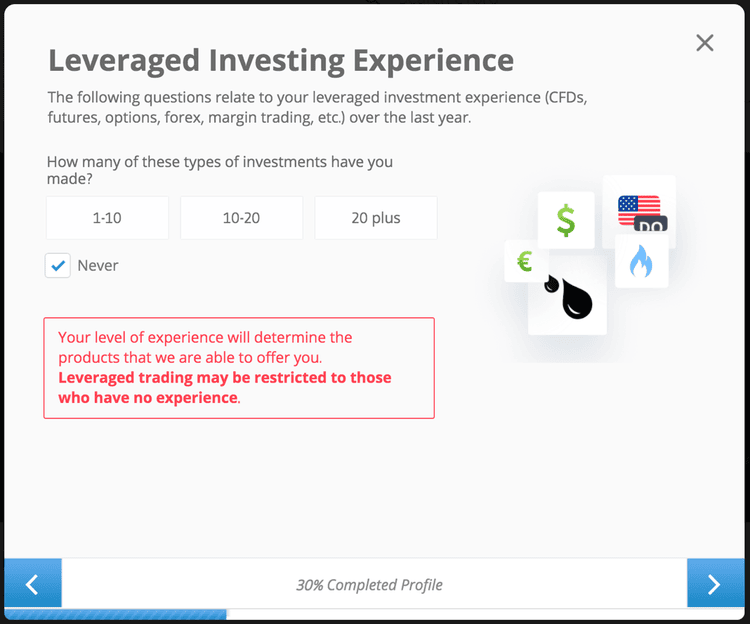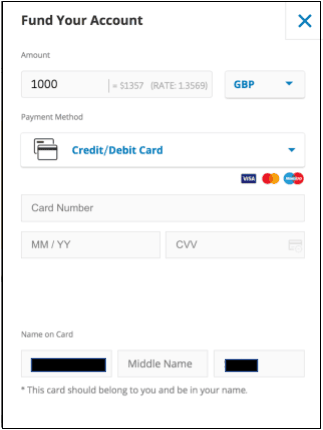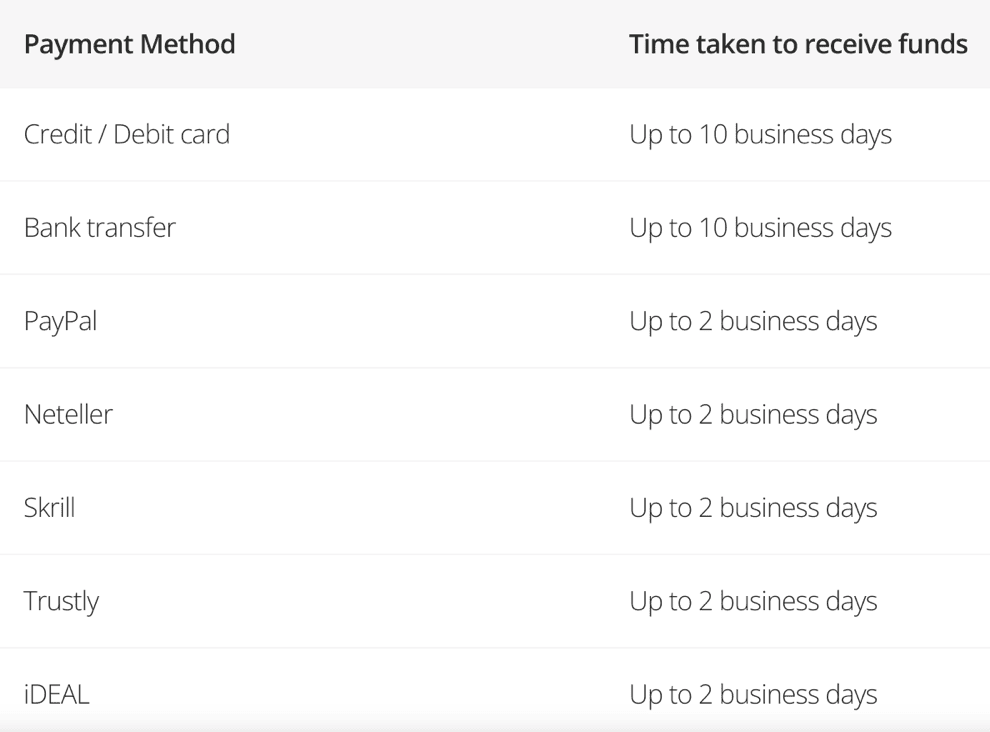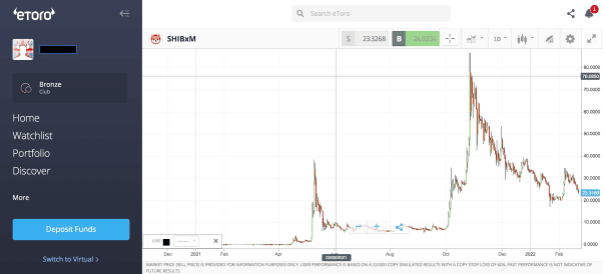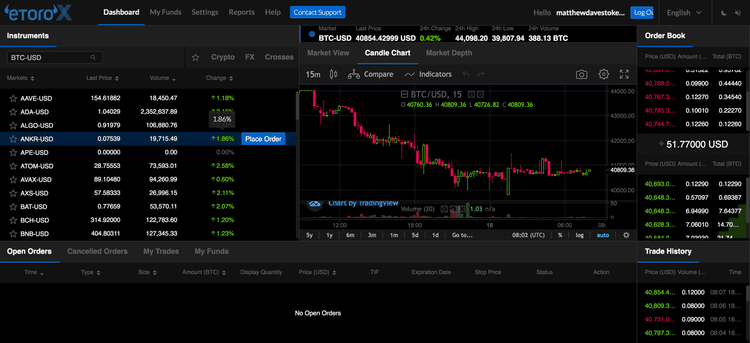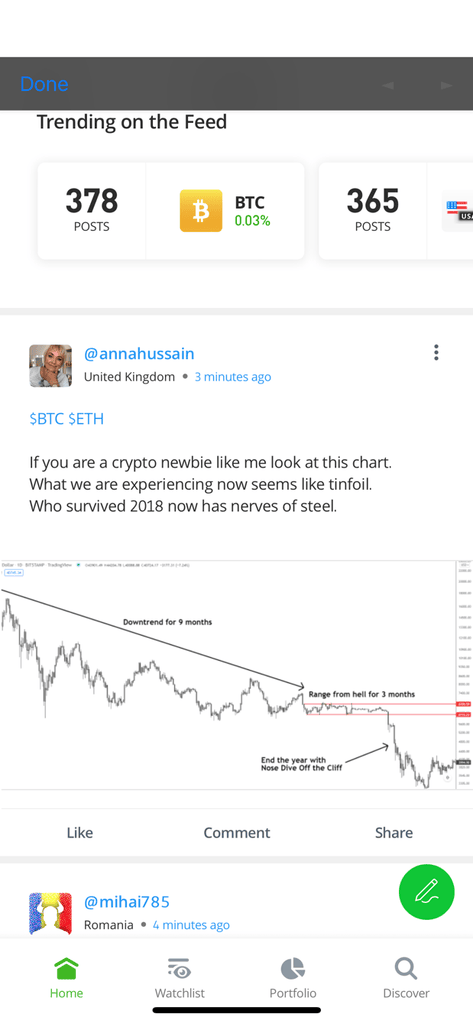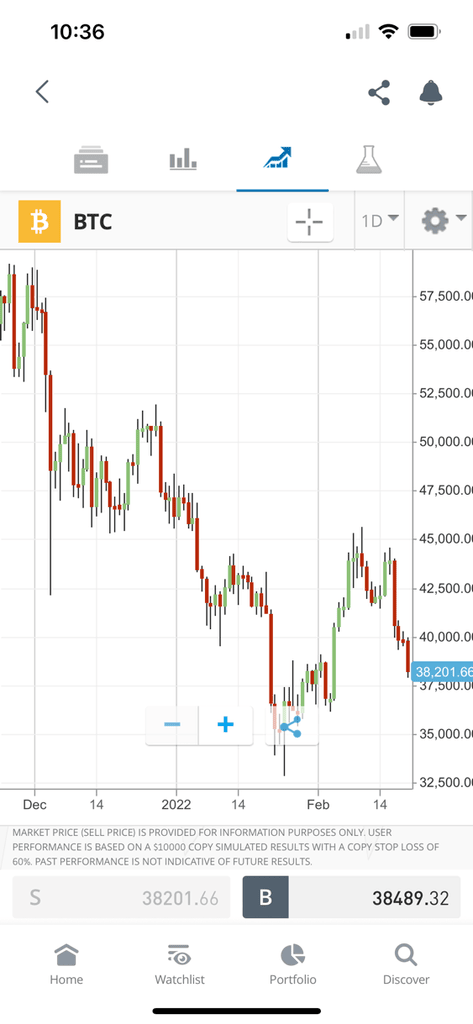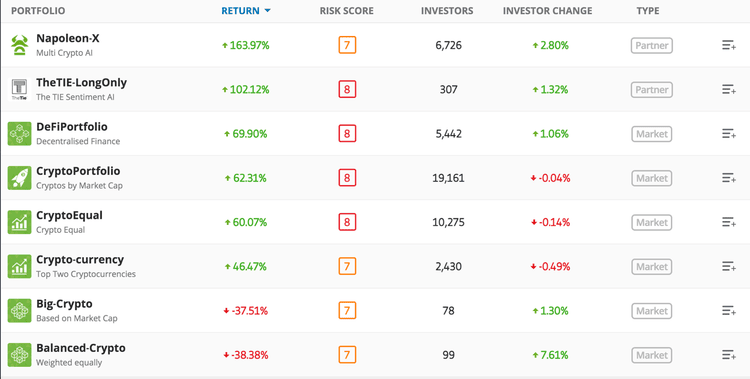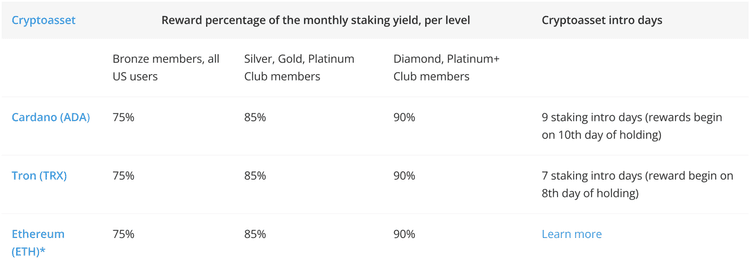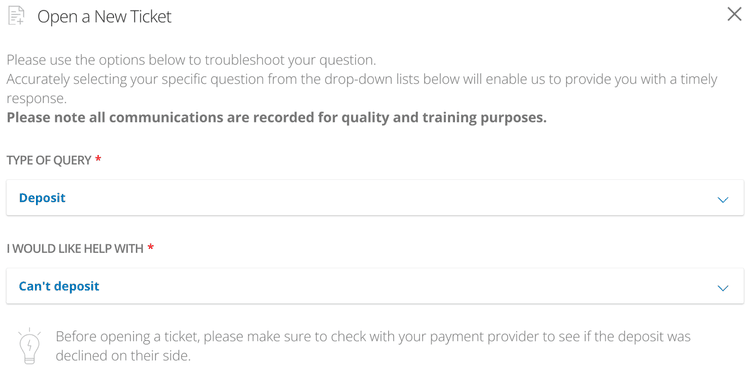eToro Overview
Intro
Founded in Israel in 2007 by brothers Ronen and Yoni Assia, eToro initially started as RetailFX and has become one of the world’s leading social investment networks. eToro started as an online forex broker and has expanded its offerings to include stock and cryptocurrency trading. In 2010 it added commodities, indices, and stocks to its offering, and from 2013 eToro added support for Bitcoin (BTC). This initial cryptocurrency offering eventually led to the expansion of its crypto support and, in 2019, launched its crypto exchange platform called eToroX and its wallet service called eToro Money. eToro has offices in the U.K., Australia, Cyprus, and China and boasts more than 20 million users in more than 100 countries.
eToro offers 3 primary services. The standard eToro brokerage and CFD exchange let users buy and sell stocks, indices, ETFs, commodities, and cryptocurrency. eToro Money is a crypto wallet service that can link to your eToro account, which lets you store all your digital currency and swap crypto for other cryptos. eToroX, which solely supports cryptocurrency trading, has been developed for professional traders and institutions, targeting the higher investment market.
For this review, we will discuss the standard eToro brokerage service, which appeals to the broader retail market, and touch on the eToroX and eToro Money products.
Is eToro Safe?
When we think of security, we always look for a history of security breaches. So, has eToro ever been hacked? Besides speculative posts on Reddit and other online forums suggesting that eToro’s down status was because of hackers, we could not find any evidence to support these suggestions or any earlier security breaches.
Like most other crypto exchanges, eToro relies on many different safety features to ensure your cryptocurrency and data are kept safe and secure. From the moment you sign up, I.D. verification is needed as part of eToro’s KYC (know your customer) policy, which is a requirement for any regulated financial institution to ensure its users are kept safe. eToro also goes a step further and makes address verification compulsory on their platform, a measure not mandatory for most other exchanges. These steps make anonymity basically impossible, but this ensures no unscrupulous activity on the platform.
eToro uses a combination of hot and cold wallets to keep most assets under lock and key. Cold wallets are stored offline, most of the time in safe and secure locations in various parts of the world. Hot wallets are so eToro can use a portion of its stored crypto for liquidity, as these assets are needed to ease trading activity. eToro has insurance for customers’ funds for up to $250,000 should the unlikely event of a breach occur.
Though not mandatory, in addition to eToro’s hot and cold wallet security measures, users are encouraged to enable two-factor authentication (2FA) on their accounts – a recommendation we agree with wholeheartedly.
Getting Started
Assets & Pairs
Even though eToro has been offering BTC since 2013, eToro’s cryptocurrency offering is not as impressive as other rivals. You can buy and trade crypto CFDs and own assets outright with eToro, and it supports 52 cryptocurrencies, while competitors such as Coinbase or Gate.io support 120 and 625, respectively. eToro also supports 14 crypto-to-crypto trading pairs and 63 crypto-to-currency pairs, including 8 of the top 10 cryptocurrencies (Tether and Terra are not supported).
If you want to diversify your portfolio and invest in other markets, eToro also supports more than 2500 stocks, 264 ETFs, 13 indices, 33 commodities, and 49 currency pairs. For a pure crypto trader looking to find the next coin to x10, eToro isn’t the best choice as it has a limited offering. To trade and own popular cryptos as part of a wider portfolio, eToro is a good option.
Sign-up / Verification Process
eToro requires I.D. and address verification before you can use their service. I.D. can be in the form of a government-issued I.D. document, like a driver’s license or passport. eToro also needs to verify your address, which is an extra layer of verification compared to most other exchanges. We used a recent utility bill for this (less than 3 months old), which is easiest for most people.
Despite this extra step, we can safely say that eToro has been the most effortless sign-up process yet, compared to other exchanges we have used and reviewed. Opening an account was simple, and verification was almost instant. Before we could finish verifying our address, we received an email saying our identity had already been confirmed.
The last step in the verification process is a questionnaire about your financial situation and your recommended financial risk tolerance and exposure to investing. eToro will limit some features if it finds that you are risking too much of your overall capital. This added protection is excellent if you’re a beginner and just want to use the platform to learn a bit more about trading.
Funding Methods
Depending on where you live, funding your eToro account is straightforward. Just click on the big blue ‘Deposit Funds’ button on the left of the user interface, and a deposit screen pops up. The support for fiat purchases and deposits was a big positive for us. It makes it easier to deposit lesser amounts and gives you the possibility to deposit a maximum of $40,000 in a single transaction using a debit or credit card. Other funding methods include bank transfers, PayPal, Neteller, Skrill, Rapid Transfer, iDeal, and Klarna. We have summarised U.S., U.K., and European funding methods below.
The standard eToro service doesn’t have support for crypto deposits. For eToroX users, you can deposit crypto from an external wallet easily using a QR code. Times vary depending on the blockchain.
Different options are available, with various times and limits on daily transactions. All transfers are in USD, and a conversion fee applies for other currencies; we have outlined this in the Fees section of this article.
The U.S.
- Credit/debit card – Instant. Up to $40,000 per single transaction
- Skrill – Instant. Up to $10,000 per single transaction
- Bank transfer – 4 – 7 days. Unlimited amount
The U.K.
- Credit/debit card – Instant. Up to $40,000 per single transaction
- PayPal – Instant. Up to $10,00 per single transaction
- Skrill – Instant. Up to $10,000 per single transaction
- Neteller – Instant. Up to $10,000 per single transaction
- Rapid Transfer – Instant. Up to $5,500 per single transaction
- Bank transfer – 4 – 7 days. Unlimited amount
Europe
- Credit/debit card – Instant. Up to $40,000 per single transaction
- PayPal – Instant. Up to $10,00 per single transaction
- Skrill – Instant. Available in most E.U. countries, check Skrill for a complete list. Up to $10,000 per single transaction
- Rapid Transfer – Instant. Only available in Austria, Belgium, Bulgaria, Estonia, Finland, France, Germany, Hungary, Italy, Latvia, Netherlands, Norway, Poland, Portugal, and Spain. Up to $5,500 per single transaction
- iDeal – Instant. Only available in The Netherlands. Up to $50,000 per single transaction
- Klarna – Instant. Only available in Germany, Austria, The Netherlands, Switzerland, Italy, Spain, Belgium, Finland, France, and Poland. Up to $30,000 per single transaction
- Bank transfer – 4 – 7 days. Unlimited amount
Withdrawals
Withdrawals on eToro are easy but take a lot longer than with other exchanges. Once a withdrawal is requested, it is deposited back to the original payment method used to purchase. Lead times on deposits are between 2 and 10 business days, depending on what deposit method you used.
You can withdraw crypto from the standard eToro service via eToro Money. The process is called ‘Crypto Trade,’ The crypto positions will need to meet specific requirements (Not available to US clients). For eToroX users, you can withdraw your crypto to an external wallet of your choice without having to go through eToro Money.
Fees
As services on the eToro exchange are diverse, the fees involved are complex. Deposits are free for both the eToro and eToroX services, but withdrawals incur a cost of $5, and the minimum withdrawal amount is $30. This is not too bad if you are trading high volumes, but this may deter a beginner from using the platform to learn and trade smaller amounts. As mentioned, it gets a bit more complex regarding crypto spreads, CFDs, and conversion fees. We spent some time studying these fees and have summarised them below.
Stocks & ETF
eToro charge no fees for trading stocks and ETFs. That is no management, rollover, ticket, or additional broker fees.
For example: If you were to spend $100 on Tesla stock that cost $10 a share, you would open a position with 10 units of stock, with no commission fees and no overnight fees, and only pay $100.
Cryptocurrency
eToro uses a spread fee model when buying cryptocurrencies. The spread is the difference between a specific asset’s buy and sell prices.
So, for example, if you put down an investment of $1000 into Bitcoin and 1 Bitcoin costs $100, you buy 10 Bitcoin but still need to pay the spread for that Bitcoin. The typical spread for Bitcoin on eToro is 0.75%; therefore, you would pay $1000 x 0.75%, which would equal $7.50. So, the total cost of 10 Bitcoin ends up being $1007.50.
Every cryptocurrency that eToro offers has a different spread, and a complete list can be found here. It is important to note that these spread fees are enormous compared to its closest rivals, like Coinbase, which has a 0% to 0.50% maker-taker fee model.
CFDs
eToro’s CFD fees are based on spreads and overnight fees. Depending on the type of asset being traded, these spreads vary. For example, currencies will range from 1 to 3 PIPs*, and commodities will range from 2 to 20000 PIPs. More on these fees here.
*PIP stands for ‘Percentage in Point.’ A pip is used to measure the change in the price of one currency to another
Conversion Fees
Withdrawals and deposits on eToro are conducted in USD. Any other currency needs to be converted and carries a conversion fee. The fees range from 50 to 150 PIPs depending on what currency you are converting and whether you are depositing or withdrawing. You can find a complete list of conversion fees here.
Inactivity Fee
eToro charges an inactivity fee of $10 per month if you do not log in to your account within 12 months. All you need to do is log in; no other activity is necessary.
The eToro Platform
Platform & Ease of Use
eToro offers 2 different platforms to buy, sell and trade cryptocurrencies. For the novice trader, you can log in to eToro’s standard CFD and brokerage service on your desktop and can easily navigate through the different stocks and cryptocurrencies currently supported. We enjoyed the social aspect of the platform, where you can make posts and comment on other users’ posts via a Twitter-style news feed. The eToro U.I. also makes depositing funds and buying crypto quite simple.
eToroX is a crypto-only exchange and was not developed with retail clients in mind. Its primary target market is institutions and professionals, so all the social features that make the standard eToro service appealing are not present on eToroX. Despite this, the user interface is sleek and easy to use. From the main screen, you have access to markets, your open orders, a live order book, your trade history, and an integrated charting tool that gives you a detailed analysis of any selected market.
Mobile App
Using eToro’s mobile app was as easy to use as the desktop version. You are initially taken to the home screen, where you can get involved in the social element of eToro. Your newsfeed allows you to make posts and interact with other investors. Navigating through the tabs at the bottom of the app, you can easily switch between the home screen, your watchlist, and portfolio, or discover and explore different cryptos, stocks, indices, etc.
For a more advanced experience, charting is accessible by clicking on the relevant asset. A small live order book can be seen at the bottom of the screen, and an integrated chart takes up most of the app. The one downside is that only 5 indicators are available on the chart, compared to the 50+ on the desktop interface. There are also no drawing tools available.
Trading Features
eToro has been developed for both the retail and professional markets, depending on which platform you use. Both platforms give users access to 7 different order types and the opportunity to short sell, margin, and leverage trade. We’ve provided some stand-out features below, but these are only available with the standard eToro service.
eToro Virtual Portfolio
eToro has developed a virtual portfolio where users can play around with the platform and invest fake money. This is a fantastic way to test out all the trading features eToro offers and get to grips with the volatility and risks involved with investing in cryptocurrency and other assets. Users are given $100,000 to play around with and can invest it how they want to. We were up almost 10% on our ‘investments’ throughout this review!
CopyTrader
eToro has an exciting feature that lets users copy other investors’ trades or portfolios. eToro has grouped popular investors into different categories, making it easy to see which copy would be best for you depending on your investment strategy. Investors are given a risk score from 1 to 10, which helps mitigate losses. We must stress that this does not mean any less risk involved in this kind of trading. All trading is inherently risky, and it is up to the user to decide if this strategy is worth it or not.
eToro helps users pick an investor to copy by placing them into long-term or long-short categories, as well as highlighting its favourites by adding them to the ‘Editors’ Choice’ list. You can also see most copied investors and investors that use a multi-strategy investment strategy. Most of the investors’ strategies are a mixture between stocks and crypto.
We liked that you can also chat with the investor via their feed, helping with any questions or concerns you may have and giving you a chance to scrutinise the investor before making your investment.
CopyPortfolio
CopyPortfolio is another unique product from eToro. This gives users who want to diversify their portfolios the option of copying successful portfolios. You need to invest a minimum of $500 and copy the portfolio trade for trade to do this.
eToro has also created crypto-only portfolios developed and managed by eToro themselves. A minimum of $2000 is required to copy, which may be a bit of a deterrent to a beginner. Currently, they have 8 different portfolios to copy, with average returns ranging from 163% to -38% since inception (at the time of writing), and each portfolio carries a risk score of 7 or 8.
Volume & Liquidity
Liquidity refers to how likely a crypto asset can be traded at a price that reflects its intrinsic value. eToro has a 24hr trading volume of around $51 million, and CoinGecko gives eToroX a liquidity rating of 2.5. If we compare this to Binance, arguably the biggest crypto exchange around, its rating is 4. This is perfect for most traders, from beginners to advanced, and traders needing more liquidity probably wouldn’t find eToro fit for their needs anyway.
Additional Features
The eToro Wallet
eToro has a wallet service called eToro Money. This hot wallet service lets users store cryptocurrency and make crypto-to-crypto conversions. Currently, eToro Wallet only supports Bitcoin, Litecoin, Ethereum, BCash, and Stellar and offers no support for NFTs. The service is free, but you will incur a 0.5% fee when you move crypto from your account to your wallet.
Strangely, a feature that put us off about the wallet is that transferring crypto is one-way only. You cannot send crypto from your wallet back to the exchange if you want to sell crypto. eToro says it will add support for this in the future, but for now, users will have to transfer crypto to another wallet or a different exchange to sell.
Having a hot wallet with limited features seems entirely redundant to us. We’d much rather keep our crypto on the exchange or in a different wallet with more features while eToro continues to develop eToro Money into hopefully a more appealing product.
Staking
Staking is a way to grow your cryptocurrency. It is similar to making interest on fiat currency in a traditional bank account. eToro offers staking and will execute the staking process on your behalf if you put your cryptocurrency up for staking for a fixed period. However, eToro’s support for staking is disappointing, as a mere 3 cryptocurrencies are available to stake, each with its own reward structure.
Users also need to hold their cryptocurrency for a certain amount of ‘intro days’ before rewards can start accumulating and the interest is paid out monthly. Perhaps one silver lining is that interest is compounded as you have more crypto from which to yield rewards each month.
Lending/Borrowing
eToro supports lending in the form of margin and leverage trades. Simply put, eToro, as the broker, lends you the capital to invest more significant amounts of assets, like cryptocurrency. You can then use this margin to create leverage, allowing you to open larger positions. This kind of trading has the potential to give you larger profits, but at the same time, larger losses too. We do not recommend this if you are new to trading.
Customer Support
We were not overly impressed with eToro’s customer support. There is no 24/7 customer support or phone support. Live chat is available, but only for Club Members, which requires an investment of at least $5000. We browsed its help section, looked at popular queries, like withdrawing funds or supported cryptocurrencies, and found the answers quickly. Still, we think more can be added, such as YouTube tutorials or picture examples.
The only way to speak to someone at eToro without being a Club Member is to open a ticket, and someone will respond within 48hrs. We tested this by opening a ticket and received a response within 24hrs – better than advertised and expected, but not great nonetheless.
NFTs
eToro currently does not offer support for NFTs. However, you can still purchase NFTs indirectly using a third-party wallet such as a MetaMask and Ethereum purchased using eToroX. The benefit of this is that you will pay no commission on your ETH purchase from eToro, but it might still be easier to use a competitor like Coinbase which has its own NFT marketplace.
Conclusions
Conclusions for Beginners
eToro offers a great platform for learning more about cryptocurrencies and trading. From the moment you sign up, eToro puts users through a risk assessment which is great for beginners to get an idea of what they are signing up for. The virtual portfolio feature allows users to explore every trading feature eToro offers before risking their capital. One downside is that eToro lacks in the customer service department, with no phone support or live chat function for its standard service.
The limited number of cryptocurrencies available makes it easier to focus on larger and more popular cryptocurrencies. Support for fiat currencies further helps beginners gain easier access to the crypto world, but fees are not as competitive as Bitvavo or Binance.
What makes eToro stand out the most for beginners is its unique social platform that lets users learn from investors with a proven and successful track record. Users can also copy these investors’ trades and strategies with eToro’s CopyTader and CopyPortfolio features, so if you want to trade crypto without actually doing it yourself, consider eToro.
Conclusions for Experienced Traders
Experienced traders will either enjoy eToro or be disappointed depending on what cryptocurrencies they want to trade and their investment strategy. More advanced tools like charting, margin, leverage trading, CFDs, and more, will appeal to most investors, including the more advanced and adventurous.
Free deposits with large limits are also very appealing. The downside is that eToro’s support for cryptocurrency is still quite limited, and it offers significant liquidity for mainly BTC and ETH. Pure crypto traders might be more inclined to enjoy eToro’s crypto-only exchange, eToroX. It is a professional-grade platform that will suit you better if you want to do high-volume trading.


